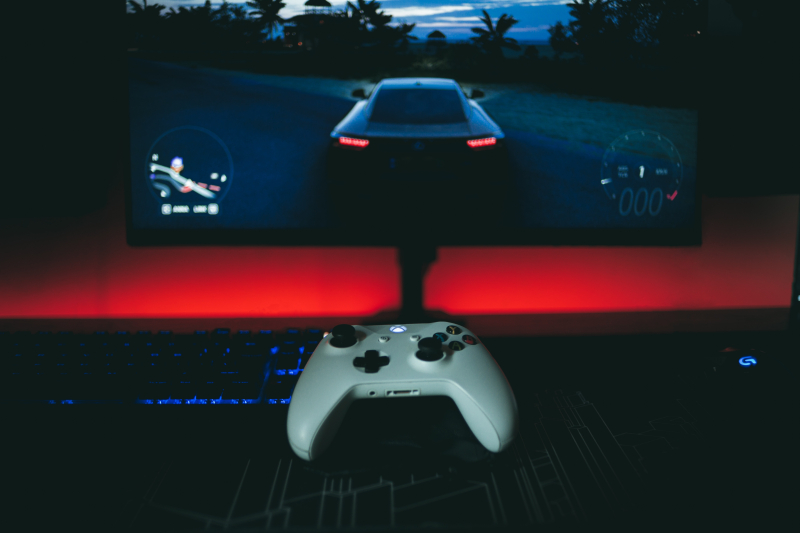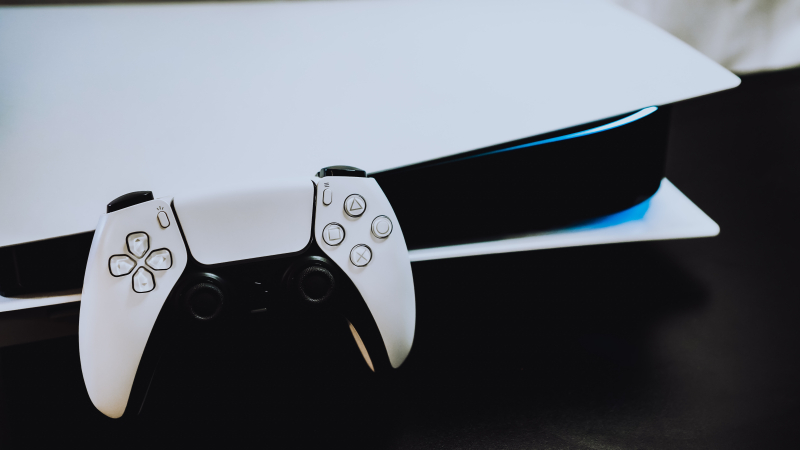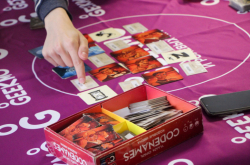It may be hard to believe it now, but back in 2013 Xbox One was presented to the public as, first and foremost, an “all-in-one home entertainment device” – not a piece of hardware dedicated solely to gaming, but rather a multimedia center which you would presumably want to use instead of, say, a TV or a DVD player (which were still relevant then). Actual games were showcased 30 minutes after the beginning of the launch presentation, which brought on quite an expected wave of outrage and mockery later on. Even the developers of the console were confused by this unveiling ceremony, which, in their eyes, completely failed at representing their efforts and was “not really matching what the soul of an Xbox console is”.
PlayStation 4, on the other hand, had a way less dramatic but prudent launch. It was so smooth that it left us no stories to tell. Sony had to be more cautious than Microsoft back then because of their previous failure with the PlayStation 3 production which resulted in months of delay, leaving it somewhat behind the Xbox One’s predecessor – Xbox 360. Sony’s new entry in the 8th generation of consoles was focused on gaming capabilities of their machine as well as the games themselves, resulting in a pretty positive pre-release reception.
After that, the miscalculation in Microsoft's marketing approach became obvious, and there was no point in hiding it. The company changed its strategy quite swiftly, focusing exclusively on games from then on. However, there was another problem and even a competitor in some way: PC gaming and hardware were evolving more rapidly in comparison to how it was during the times of the 7th generation of consoles. At some point, gamers even began to accuse consoles of slowing down the evolution of the gaming industry itself (since consoles were the lowest common denominator for all multi-platform game developers). On top of that, it turned out that Xbox One performed poorer than even its direct competitor – PS4, let alone modern and high-end PCs.
And so the mid-generation of consoles was born. It can be described as the 8.5 generation since it didn’t bring any dramatic changes to be accepted as true “next-gen,” but presented two new branches of machines. The first one consisted of PS4 Slim and Xbox One S (which lacked some features of the original Xbox One), which were redesigned to be lighter and cheaper. The second one brought to the market truly high-end devices known as Xbox One X and PlayStation 4 Pro. The performance struggle was finally settled with Xbox One X coming out of it as “the most powerful console in the world”. It could be toppled only by costly PC builds, while PS4 Pro, PS4 Slim and Xbox One S were trailing behind it precisely in that order.
Although Xbox One X was indeed the most powerful console, this fact alone didn’t make it the absolute best. The thing is, consoles don’t mean a lot without games. Exclusive games, to be precise. Sony and Microsoft usually sell hardware at such a minimal price that it barely brings any money on its own. Sometimes, the profit is even negative. The biggest bulk of profit comes from games and that’s where things begin to differ considerably. Sony is consistent in broadening the variety of their exclusives, which are extremely rarely ported to the PC (and if they are, it happens years after the initial release). Microsoft, being the developer of the Xbox and the Windows OS simultaneously, tends to release its “exclusives” on both platforms at once, thus virtually depriving them of their “exclusivity”. And there are, of course, games that are shipped on every platform available. And so, Xbox One X finished this race as the most powerful console, while PS5 closed the current generation by being the console with the widest range of exclusive games.
New consoles’ hardware & design
Now that we are acquainted with the issues of the current (or, in a few days, previous) generation, the vector of the new launch campaign looks way more clear and understandable. Needless to say, Microsoft has dropped all attempts of selling us an “all-in-one entertainment device” while Sony has tried to beat its competitor in raw power and performance without losing its focus on exclusive games. And of course, during the long 8-years life cycle of the 8 and 8.5 generations of consoles, some new awesome technologies and features have emerged on the PC platform and were incorporated in both PS5 and Xbox Series X during their development period. It’s time to take a closer look at these advances.
Console design has always been a hot topic for discussion, but the new generation has managed to escalate it even further by bringing us two machines that couldn’t look less similar. Xbox Series X has emerged in the shape of, well… a box, which immediately caused a wave of comparisons with fridges, washing machines, and other rectangular home devices. The public reaction didn’t put Microsoft off in the slightest, and the company even shot back by launching a giveaway of an Xbox Series X Fridge on Twitter and YouTube.
The smooth and somewhat alien-looking design of PlayStation 5, on the other hand, seems to have been accepted by the public with a mild tone of surprise and no more than that. However, some hardware manufacturers like Zotac have already found certain similarities with the look of their own products. All in all, the design discussion may continue forever and therefore the appearance of the product is better to be left to each customer's personal judgement. What can be evaluated in a more objective way, however, lies beneath this external design and is the main point of interest during the pre-launch period.
Historically, each new generation of consoles has tried to blow PCs out of the water at the beginning of its life cycle. This goal becomes harder and harder to achieve with each generation because of the very rapid evolution of technologies and vast improvements in PC hardware which goes through a few generations of its own by the time a new console is released. Nevertheless, Microsoft and Sony don’t stop in their attempts and thus implement as many technological advances in their machines as possible. The heart of both PS5 and Xbox Series X is again an AMD Zen APU. This is a second generation of a semi-custom chip developed by AMD exclusively for Microsoft and Sony which contains both CPU and graphics units. Though the architecture is similar to that used in AMD’s PC processors, this one is tailored specifically for the needs of consoles and is way more powerful in comparison to the first generation of Zen used in Xbox One and PS4.
When it comes to direct comparison of the raw computational power the situation is as follows: Xbox Series X with its 52 compute units can deliver up to 12 teraflops (flops, floating point operations per second, are a common measure of computer performance), while the 36 compute units of PS5 provide 10.28 teraflops. It must be noted, though, that such numbers are rarely good at representing actual game performance and experience because eventually it all boils down to the skill and experience of the developer. Nevertheless, these numbers come from a new AMD graphics unit called RDNA 2 that has incorporated most of the advanced features of the latest GPUs compatible with DirectX 12 (DX12). For instance, it now supports hardware accelerated real-time ray tracing, mesh shaders (which means more detailed geometry is possible), and variable rate shading (less important parts of the frame are rendered at ½ or ¼ resolution saving some computational power for more impactful areas). The ray-tracing part is supposed to finally close the technological and visual gap between the PC and console versions of some games. It appeared after Nvidia had released its RTX 20xx generation of GPUs that brought the first implementation of hardware ray-tracing support, which the current generation of the consoles lacks. Other innovative features are meant to deliver the experience currently available only for some PC players through the latest versions of DX12 and the latest Nvidia 30xx series of graphics cards.
Apart from the new APU’s computational power and features, each console has received a set of improvements in other areas. The shared pool of RAM and GPU memory has been increased, as expected, to 16GB GDDR6. A storage upgrade, surprisingly, turned out to be one of the most notable changes by bringing lightning-fast custom NVMe (non-volatile memory) SSDs to both machines. The speed at which the new drives load scenes and deliver assets has become one of the major points of marketing campaigns on both sides, most impressively demonstrated by the Unreal Engine 5 demo running on PS5 – which we’ve broken down in one of our earlier articles. The Xbox Series X storage drive can boast a throughput of 4.8 GB/s, while ordinary PC SSDs read and write data at a humble pace of about 0.5 GB/s with only some quite costly NVMe models being able to compete with the new consoles. Microsoft proudly named their storage structure Velocity Architecture, while Sony opted to leave theirs without a title, demonstrating an even greater speed of 5.5 GB/s and adopting a new compression algorithm dubbed Kraken along with a dedicated hardware decompression unit.
The list of small but impressive improvements (like liquid metal used in PS5 instead of the usual thermal paste) can go on for many pages, but there is one more that definitely deserves to be mentioned. At one of their recent technical presentations, Sony has revealed their new sound engine called Tempest. It’s a hardware chip based on an AMD GPU unit stripped of all the unnecessary processing parts. In simple terms, its goal is to deliver audio as realistic and high-quality as it gets. The interesting part is that it can make use of the so-called head-related transfer function (or simply HRTF), which is a set of personal characteristics describing how one’s ear receives sounds from a point in space. PS5 is shipped with 5 HRTF presets based on the ear variations of roughly 100 people. Moreover, Sony is considering the possibility of creating a personal HRTF profile for each user based on their unique ear structure, which can potentially deliver an unprecedented sound quality and pin-point precision in sound localization.
What about games and prices?
When it comes to games, there are, unfortunately, only a few major first-party launch titles to discuss. It’s an expected situation, though, because it’s harder to develop a game for a console not yet released, so only a couple of studios are able to deliver it in time.

Credit: Dimitris Chapsoulas (@synesthe2ia) via Unsplash
PlayStation 5 is launching with Marvel's Spider-Man: Miles Morales (will also be available for PS4) and the remake of Demon’s Souls as the leading exclusives for the first days of release. Later on, we can expect to see such famous projects as Horizon Forbidden West and Gran Tursimo 7 coming to join the party of Sony’s exclusive products. Xbox Series X brings Halo Infinite as its main first-party game along with a wide range of updated projects such as Forza Horizon 4 and Gears 5, which are also available on Windows. And, of course, there’s a long list of cross-platform titles including such renowned and long-awaited ones as Cyberpunk 2077 and Assassin’s Creed Valhalla. ITMO.NEWS covered these and other anticipated gaming releases of the October-December period a few weeks ago.
The launch of new consoles is not an easy time for any big studio which aspires to ship its products on every available platform. It has to adapt the product both for PS4 and Xbox One (which have to be supported at the moment) and to PS5 and Xbox Series X/S as well, let alone the PC version. The necessity of making the game run on 8-year old hardware can cripple the development of a game that was initially meant for the new generation and high-end PCs. Such hardships sometimes end up with multiple delays, as it happened with Cyberpunk 2077, for example. Therefore, a sweet option for developers is to upgrade their existing products for new consoles via patches and remasters that enhance the visuals and add effects supported by the new machines.
Fortunately for Xbox players, Microsoft has announced the Smart Delivery program that allows them to receive such an upgrade for free. Another service called Game Pass is still on the table, granting access to a multitude of games with a monthly subscription payment. Moreover, these two are compatible with each other! For example, let’s imagine that you have an Xbox One and own a game for it that is about to receive an upgrade patch for Xbox Series X. Then, should you decide to acquire the new console, you will be able to go on playing this game on it for free, and when the time comes, the upgraded version will be available for you as well at no additional cost. Sony, on the other hand, has a different strategy with its PlayStation Plus subscription that offers monthly, quarterly, and yearly plans that would provide you with at least 24 free games a year (two per month). It also features free next-gen upgrades for PS4 games. The launch of PS5 brings an expansion of this service called PlayStation Plus Collection which gives every owner of the new console access to a selected range of successful PS4 titles for free.
The consoles themselves are also launching in different configurations. Microsoft has decided to split the new Xbox generation at the very beginning, shipping one slim, light and cheaper Series S machine alongside its high-performance big brother called Series X. The S option is sold at $299 (~27,000 rubles) being way cheaper than X, which comes at $499 (~45,000 rubles). The price difference is due to the reduced processing power (4 teraflops) of the younger version as well as to the removal of the optical disc drive which makes Series S a digital-only version. Sony, too, is entering the market with two options. The difference here, however, is less dramatic and comes down only to the removal of the optical drive. Therefore, you can buy either PlayStation 5 for $499 (~47,000 rubles) or PlayStation 5 Digital Edition for $399 (~37,000 rubles).
Xbox Series X/S will become available on November 10, while both versions of the PlayStation 5 will join the ride on November 12 or 19 depending on the region.
Written by Pavel Vorobyev



